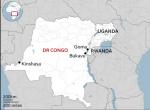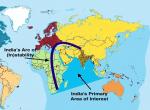The Chinese National Health Commission has announced that COVID-19 epidemic has peaked and plateaued, but people have been warned not to be complacent amid risks of more outbreaks. Meanwhile, temporary hospitals in Wuhan which had been set up to respond to the crisis are being shut down, and patients transferred to other major hospitals. However, the WHO has retained its Risk Assessment grading for China as ‘Very High’ and the current statistics as on 17 March 2020) are 81,116 confirmed (39 new) cases and 3231 deaths.1
The Chinese medical community i.e. doctors, health-care workers and laboratory staff have received accolades for their commitment to fight the epidemic, and on their part, communities and people supported the government’s aggressive plans to contain the virus. Similarly, the Chinese public security agencies discharged their duties efficiently and enforced strictest control measures announced by the government. It is not surprising that the Report of the WHO-China Joint Mission on Coronavirus Disease 2019 has acknowledged China’s “bold approach to contain the rapid spread of this new respiratory pathogen that has changed the course of a rapidly escalating and deadly epidemic,”2 Also, it is noteworthy that Chinese doctors and specialists who bring with them enormous experience of responding to the coronavirus are now deputed to Italy, the worst affected country outside of China, to help the country fight the virus.3 China has also supplied medical equipment to Spain.
The COVID-19 also witnessed a number of new technologies put to use to manage the pandemic. Among these, Fourth Industrial Revolution (4IR) technologies such as the AI, Bigdata, Robots and Autonomous platforms are finding diverse uses in the fight against the pandemic. Medical professionals are convinced about the role of data analytics and predictive model systems which helps them to understand the spread of the diseases a lot better and efficiently manage and deliver healthcare in a timely manner. Gabriel Leung, dean of the Li Ka Shing Faculty of Medicine at the University of Hong Kong who was member of the WHO-China report has stated that Artificial Intelligence (AI) and Bigdata helped in effectively quarantining and monitoring social distancing.4
The use of AI in COVID-19 pandemic is quite revealing. Baidu, a Chinese internet service provider developed an algorithm called Lineatrfold to fight the outbreak.5 Apparently Lineatrfold is a high-speed algorithm and can quickly ‘predict the structure of a virus’. This is particularly important in the case of COVID-19 which has ‘only a single strand RNA, so it is able to rapidly mutate’.6
Baidu also developed face recognition and infrared temperature detection techniques. AI-powered infrared system capable of detecting change in body temperature of a person were installed at public places such as railway stations and airports. The system can screen nearly 200 people every minute accurately identifying those infected without disrupting passenger flow. The system has been effectively used at the Qinghe Railway Station in Beijing to identify passengers that could be potentially infected. A similar equipment was installed at the East Railway Station in Chengdu. An employee at the station stated that “Before this, I’d have to test everyone’s temperature with an ear thermometer. And sometimes that doesn’t work - I think this new system is much better…making my life much easier.”7
There were fears that people wearing facemasks could deceive the face recognition equipment. However, AI companies such as SenseTime and Hanwang Technology were able to develop special facial recognition technology that could accurately recognize people even if they are masked. SenseTime claims high recognition rate of 95 per cent with mask and 99.5 per cent without. The company’s clients include the Chinese Ministry of Public Security which has the police under it, and there are another 200 clients who use the same equipment.8 Likewise, Hanwang Technology’s facial-recognition system has thermal imaging cameras with mask recognition algorithm.
Bigdata is another effective technology for responding to CORONA-19. Gong Ke, president of the World Federation of Engineering Organizations (WFEO) has noted that “Data can help in managing population movement, and contact and detect and quickly isolate sources. Bigdata and information engineers have been playing an important role in this regard,”9 Dashboards based on Big Data can continuously monitoring the virus.
Smartphone are important devices to keep track of infected persons. Mobile Apps such as WeChat and Alipay were continuously monitored to track infected people as also identify who were in their close proximity or traveling with, and may have been infected.10 This was also a sure way to dissuade people from traveling or moving out in case they were infected. Apparently, China Mobile, a telecom company was sending ‘text messages to state media agencies, informing them about the people who have been infected. The messages included all the details about the persons travel history.’11
The robots have been at the frontline in the fight against the COVID-19. These were deployed to detect, monitor and support treatment of victims of the pandemic. Among the many uses, these are being used in critical care functions, monitoring health condition of the affected person, conducting thermal imaging, routine chores such as disposal of bio-hazardous waste and carrying supplies to different sections of the hospital thus freeing critical human resources which were put to better use than engaging in mundane tasks including monitoring basic medical parameters of the patient. Interestingly the robots also “prepared meals at hospitals, doubling up as waiters in restaurants, spraying disinfectants and cleaning, to vending rice and dispensing hand sanitizers.”12
The drones were also mobilized in the affected areas to carry medical equipment and laboratory samples. These not only saved time but also enhanced speed of testing. Reportedly, Chinese drones are powered with facial recognition and fly with “QR code placards that can be scanned to register health information”.13 Also, drones were used for public announcements advising people to wear facemasks as also to warn people not venture out of homes.
Alibaba and Tencent, the Chinese technology giants have developed a software to enable tracking people. The software designates colour code to people (green, yellow or red) based on travel and medical history, and determines if a person should be quarantined or allowed in public spaces.14 All Chinese citizens have to compulsorily log into Alibaba’s Alipay and only after they have been coded ‘green’ that they can be allowed to enter public places such as metro stations, offices, stations. More than 200 Chinese cities including the industrial hub Shenzhen are using this system and similar systems are being extended nationwide.15
Autonomous Vehicles have played an important role in the fight against the COVID-19 and filled the gap by ferrying medical personnel, transporting equipment and medicines thus precluding risk of people-to-people contact between drivers and workers. These also delivered food to hospitals, quarantine spaces and residential areas. For instance, Baidu’s autonomous vehicle platform in partnership with self-driving startup Neolix delivered materials and food supplies to a hospital in Beijing.16 Baidu Apollo also made available its cloud services for free to companies fighting the virus. Idriverplus, a Chinese self-driving company which operates electric street cleaning vehicles, is also part of the COVID-19 response mission17 and its vehicles are being used to disinfect hospitals.
Although China is leader in 4IR technologies particularly in the commercial domain, it has not shied from seeking assistance from foreign companies. For instance, AI company Megvii is developing a solution in response to a call by Chinese authorities for new technologies to control the outbreak. It “integrates body detection, face detection and dual sensing via infrared cameras and visible light” to help staff working at airports and train stations to “swiftly identify people who have elevated body temperatures.”18
Concluding Thoughts
There is no doubt that China has one of the most sophisticated and sprawling surveillance networks to monitor the activities of its people through their mobile devices, social media accounts, travel itineraries and even when they go to stores to purchase groceries. Apparently, there are nearly 200 million security cameras installed across the country and eight out of the top 10 cities in the world which are most-surveilled are in China.19 But its integration of cameras with 4IR technologies has helped it mange the pandemic.
The Chinese government has successfully mobilized and harnessed 4IR technologies and controlled the spread of the pandemic. Many of the technologies were able to provide real-time information of the spread of the pandemic as also help in monitoring and tracking the infected persons. The Chinese successes in the use of 4IR technologies may have put to rest some of the suspicions, albeit for some time, about its national surveillance system which is known to be highly intrusive and helps the government in social control. It remains to be seen if China would now aggressively use 4IR technologies and pursue mass surveillance on its citizens.
Dr Vijay Sakhuja is Consultant with Vivekananda International Foundation, New Delhi.
Endnotes
- “Coronavirus disease 2019 (COVID-19) Situation Report – 56”, https://www.who.int/docs/default-source/coronaviruse/situation-reports/20200317-sitrep-57-covid-19.pdf?sfvrsn=a26922f2_2 (accessed 18 March 2020).
- “Report of the WHO-China Joint Mission on Coronavirus Disease 2019 (COVID-19) https://www.who.int/docs/default-source/coronaviruse/who-china-joint-mission-on-covid-19-final-report.pdf (accessed 17 March 2020).
- “China is sending medical experts and supplies to help Italy fight coronavirus”, https://www.weforum.org/agenda/2020/03/coronavirus-covid-19-italy-china-supplies/ (accessed 16 March 2020).
- “China’s aggressive measures have slowed the coronavirus. They may not work in other countries”, https://www.sciencemag.org/news/2020/03/china-s-aggressive-measures-have-slowed-coronavirus-they-may-not-work-other-countries (accessed 17 March 2020).
- Aditya Chaturvedi, “How China is using technology to fight coronavirus” https://www.geospatialworld.net/blogs/how-china-is-using-technology-to-fight-coronavirus/ (accessed 18 March 2020).
- Ibid.
- “How China is using AI and big data to fight the coronavirus”, https://www.aljazeera.com/news/2020/03/china-ai-big-data-combat-coronavirus-outbreak-200301063901951.html (accessed 16 March 2020).
- “China’s Hanwang Technology claims it can ID mask-wearing faces”, https://tech.newstatesman.com/security/hanwang-technology-id-mask-wearing-faces (accessed 17 March 2020).
- “AI, big data, infotech deployed against COVID-19”,
https://www.scidev.net/asia-pacific/engineering/news/ai-big-data-infotech-deployed-against-covid-19.html.....(accessed 17 March 2020). - “AI Weekly: Coronavirus, facial recognition, and the future of privacy”, https://venturebeat.com/2020/03/06/ai-weekly-coronavirus-facial-recognition-and-the-future-of-privacy/ (accessed 17 March 2020).
- Aditya Chaturvedi, “How China is using technology to fight coronavirus” https://www.geospatialworld.net/blogs/how-china-is-using-technology-to-fight-coronavirus/ (accessed 18 March 2020).
- Ibid.
- “10 Ways Technology is Helping To Fight the Coronavirus”, https://www.asia-pacific.undp.org/content/rbap/en/home/blog/2020/10-ways-technology-is-helping-to-fight-the-coronavirus1.html (accessed 17 March 2020).
- “How Is China Coping Up With The COVID-19 Outbreak?”, https://www.expresscomputer.in/news/how-is-china-coping-up-with-the-covid-19-outbreak/50871/ (accessed 17 March 2020).
- Ibid.
- “Baidu uses autonomous vehicles to deliver meals to hospitals in China”, https://cntechpost.com/2020/02/22/baidu-uses-autonomous-vehicles-to-deliver-meals-to-hospitals/ (accessed 17 March 2020).
- “How Is China Coping Up With The COVID-19 Outbreak?”, https://www.expresscomputer.in/news/how-is-china-coping-up-with-the-covid -19-outbreak/50871/ (accessed 17 March 2020).
- “How China is using AI and big data to fight the coronavirus” https://www.aljazeera.com/news/2020/03/china-ai-big-data-combat-coronavirus-outbreak-200301063901951.html (accessed 17 March 2020).
- “Surveillance camera statistics: which cities have the most CCTV cameras?”, https://www.comparitech.com/vpn-privacy/the-worlds-most-surveilled-cities/ (accessed 17 March 2020).
(The paper is the author’s individual scholastic articulation. The author certifies that the article/paper is original in content, unpublished and it has not been submitted for publication/web upload elsewhere, and that the facts and figures quoted are duly referenced, as needed, and are believed to be correct). (The paper does not necessarily represent the organisational stance... More >>
Image Source: https://miro.medium.com/max/1024/1*ftqavig1QwU30Hpvx1e9SQ.jpeg











Post new comment